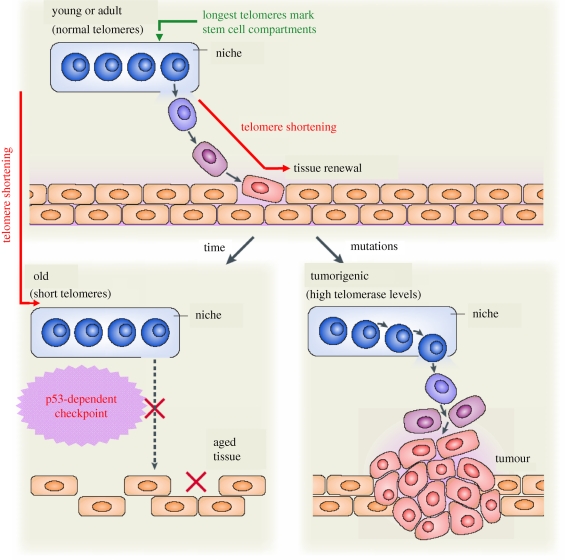Figure 2.
A stem cell-based model for the role of telomeres in cancer and ageing. The longest telomeres mark the stem cell compartments (niches). In young or adult organisms, stem cells (blue rounded cells) repopulate tissues as needed: they exit from the niche, proliferate and differentiate (square orange cells). During this process, stem cells undergo telomere shortening, which is partially counterbalanced by the action of telomerase. In old organisms, stem cell telomeres are too short. Critically short telomeres are recognized as DNA damage, activating a p53-mediated DNA damage signalling response that impairs stem cell mobilization and, as a consequence, the tissue regeneration is suboptimal leading ultimately to organ failure. A decreased stem cell mobilization reduces the probability of accumulating abnormal cells in tissues, providing a mechanism for cancer protection. If the stem cells express aberrantly high levels of telomerase (by acquisition of tumorigenic, telomerase-reactivating mutations), stem cell mobilization is more efficient than normal. Under these higher mobilization conditions, tissue fitness would be maintained for a longer time, increasing lifespan and also the probabilities of initiating a tumour.

